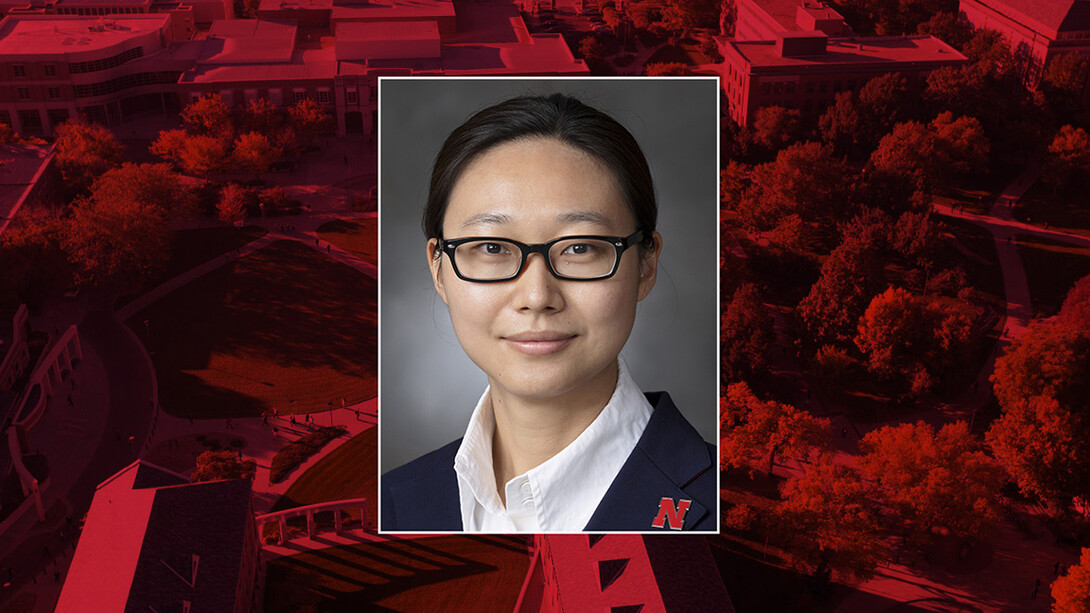
As wireless technology continues to advance and expand, the demand for broad-ranging, reliable, high-speed internet access is increasing rapidly — too rapidly for many modern systems that are insufficiently equipped to support next-generation 6G applications relating to virtual reality, robotics, and digital twins.
Shuai Nie, assistant professor in the School of Computing, and her collaborators at Tufts, Penn State, New York University, and the University of Nebraska–Lincoln aim to remedy this issue with a $340,000 grant from the National Science Foundation that will support the development of an innovative solution: a smart surface.
Nie’s project will involve designing an active reconfigurable intelligent surface that would improve wireless coverage by allowing more efficient control over reflected signals while consuming less power. The active smart surface would enable sub-terahertz — or above 100 gigahertz — wireless communication by leveraging the much larger bandwidths available at this higher frequency.
Achieving successful sub-terahertz wireless communication has proved challenging for many researchers due to limited distance caused by transmission loss and interference that occurs at higher frequencies.
“In a smart factory, there are always the pipes, the walls, the robot arms, and the metal that is even harder for signals to penetrate. They attenuate significantly after some distance, and it causes a lot of what we call non-live site propagation,” Nie said. “In order to overcome this kind of challenge, we're trying to create this reconfigurable intelligent surface that we can patch to the static infrastructure, like the walls or doors, so we can try to compensate for the losses that occur when being reflected or diffracted, and we can actually improve the strength.”
Because few wideband smart surface hardware prototypes have been built for the sub-terahertz level, the first step in Nie’s project will be to build a “passive” smart surface prototype that will be used for testing and exploring options at the higher frequency, such as how the amplitude and phase can be controlled.
“In the traditional applications of the reconfigurable intelligence surfaces, it's only the phase that you can control,” Nie said. “The amplitude is another layer that can be controlled, but in order to control the amplitude, we need to bring in some active components. If we can control the amplitude, we can more efficiently improve and increase the power.”
To accomplish this, Nie will convert the passive prototype into an active one using amplifier-integrated liquid crystal-based substrate-integrated waveguide. The added layer will provide a wide angular range of reflection that will operate at 142 GHz and enable high tunability for each smart surface element.
“The idea behind reconfigurable intelligent surfaces is that we’re controlling the way electromagnetic wave is being reflected and its behavior when it's being propagated in the channel,” Nie said. “What we're doing is taking it one step further to make it active so that we can make the propagation more flexible.”
Nie will develop both the passive and active prototypes at the University of Nebraska–Lincoln’s Nano-Engineering Research Core Facility. Each will be used to conduct on-site wireless propagation measurements in order to create a model for smart surface-aided communications. With assistance from research team members at NYU, Nie will also perform extensive validation techniques on the prototypes using “NYURay,” an NSF-funded open-source ray-tracing simulation tool.
Nie will also collaborate with Laxmi Chapagain, a School of Computing doctoral student who recently presented their research paper, “Design and Characterization of Dual-Band Complementary Split-Ring Resonator Array in the D-Band for 6G Wireless Networks,” at the 2024 IEEE Miliary Communications Conference in Washington, D.C. Chapagain’s role in the project is to focus on developing optimized antennae and designing an array that will enhance system performance and optimize the active smart surface.
“This work focuses on the designing and simulation of a compact, low-profile antenna array that operates simultaneously at two distinct resonating frequencies within the D-band (110–170 GHz) frequency spectrum,” Chapagain said. “The dual-band functionality not only enhances integrated communication and sensing, but it also reduces the number of antennae required in systems, making it ideal for space-constrained devices.”
Chapagain said her work on this breakthrough technology design is particularly exciting, as it will pave the way for the way for future wireless networks.
“Within the next five years, the demand for data is projected to require terabit-per-second wireless links, necessitating networks that can handle a significant surge in data traffic,” Chapagain said. “Our design demonstrated superior gain performance compared to existing designs, showcasing its potential for advanced 6G wireless applications.”
In addition to developing and testing the smart surface design models, Nie’s project will also focus on the development of novel and robust algorithms that will allow optimal control of the active smart surface systems and their coefficients. These algorithms will be used to track underlying network interactions and provide strong scalability and generalizability, ultimately permitting broader implementation in the future.
Nie envisions that her new active smart surface device would improve efficiency and lower cost in smart factories and eventually extend into other smart settings.
“I'm definitely thinking that the potential usage will go beyond industry. For example, smart healthcare,” Nie said. “I think the application in the operation room and the scenario there is quite similar to the factory setting, so there has to be the same advanced wireless communication technologies.”
Nie said her smart surface will be a physical patch, similar to wallpaper, that will come in various sizes for different uses and locations. She also said she expects her prototype to become more sophisticated over time, much like other famous smart gadgets.
“I imagine it will be like the very old cell phone. The first prototype may always be quite bulky, but now we have this palm-sized device,” Nie said. “We're also trying to make solutions more energy and cost efficient, so this is something that hopefully by the end of the project we would be able to achieve.”







